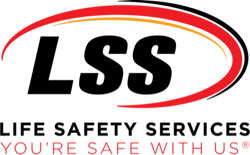In the hospitality industry, safety is a top priority. Whether it's a hotel, resort, or other lodging facility, ensuring the safety of guests and staff is crucial. One often overlooked but vital safety feature is the fire door. Fire doors are the first line of defense in controlling the spread of fire and smoke, and regular inspections are essential for ensuring their effectiveness. In the United States, the National Fire Protection Association (NFPA) provides strict guidelines for the inspection and maintenance of fire doors through the NFPA 80 and NFPA 101 codes.
This blog will explore why annual fire door inspections are critical in the hospitality industry and the specific NFPA codes that require compliance.
Why Fire Door Inspections Matter
Fire doors are designed to contain fire and smoke, providing valuable time for occupants to evacuate safely and preventing further damage to the property. In the hospitality industry, where many people occupy enclosed spaces, this is particularly important. Hotels and resorts can be large, multi-story buildings with complicated layouts, making the containment of fire crucial to the safety of guests and staff.
The failure of a fire door to function correctly during an emergency can result in loss of life, severe injuries, and costly damage. Furthermore, non-compliance with fire safety regulations, including failure to conduct annual fire door inspections, can result in hefty fines, legal liabilities, and reputational damage.
NFPA Code Requirements for Fire Door Inspections
The NFPA establishes the standards for fire door inspections in the USA, particularly through NFPA 80 (Standard for Fire Doors and Other Opening Protectives) and NFPA 101 (Life Safety Code). These codes lay out the specific requirements for fire door installation, maintenance, and inspection.
1. NFPA 80: Standard for Fire Doors and Other Opening Protectives
NFPA 80 governs the installation and maintenance of fire doors. Section 5.2.1 of the 2022 edition outlines the requirements for fire door inspections and states that fire door assemblies must be inspected and tested at least annually to ensure they remain functional.
The inspection must verify several critical aspects, including:
- Proper door clearance: Ensuring the door fits properly within the frame and has adequate clearance.
- Operational condition: Checking that the door closes completely and latches securely without sticking.
- Condition of seals and gaskets: Ensuring that smoke seals and intumescent gaskets are in good condition and have not deteriorated.
- Door hardware functionality: Testing locks, latches, and self-closing devices to ensure they function correctly.
Failure to meet these standards can compromise the fire door's ability to contain a fire, potentially resulting in a life-threatening situation.
2. NFPA 101: Life Safety Code
NFPA 101 is the Life Safety Code that provides guidelines for building safety, including occupancy regulations for hotels, resorts, and other lodging facilities. It emphasizes maintaining proper egress routes and safe evacuation procedures. Fire doors play a critical role in ensuring these routes remain smoke-free and accessible during an emergency.
According to NFPA 101, fire doors must be kept in working order, and regular inspections are essential to verify that the doors can perform their intended function during a fire. Non-functioning fire doors can lead to unsafe evacuation conditions, especially in large hotels where the movement of people needs to be controlled and protected.
Key Components of an Annual Fire Door Inspection
A thorough annual inspection of fire doors includes several critical steps:
- Visual inspection: The inspector examines the physical condition of the door, frame, and hardware for any signs of damage or wear.
- Operational test: The door is tested to ensure it closes fully and automatically without interference.
- Hardware check: The inspector tests door hardware, including locks, hinges, and door closers, to ensure proper functionality.
- Gaps and clearances: The door is checked for proper clearances, ensuring no excessive gaps exist that could allow fire or smoke to pass through.
- Label verification: The fire rating label on the door must be intact and legible.
These inspections must be documented and kept on record for code enforcement authorities to review if necessary.
The Risks of Non-Compliance
Failure to conduct regular fire door inspections not only puts the safety of guests and staff at risk but also opens up the business to significant legal and financial consequences. In the event of a fire, if an investigation finds that fire doors were not inspected according to NFPA guidelines, the business could face:
- Fines and penalties: Local fire codes may impose fines for non-compliance with fire safety regulations.
- Insurance claims denial: If a fire causes significant damage and it is discovered that fire doors were not properly inspected, insurance companies may deny claims.
- Legal liabilities: In cases where negligence can be proven, such as failing to comply with fire safety regulations, businesses may face lawsuits from injured parties.
Conclusion
In the hospitality industry, guest safety is non-negotiable, and fire door inspections are a critical aspect of maintaining a safe environment. The NFPA 80 and NFPA 101 codes provide clear guidelines for the installation, inspection, and maintenance of fire doors. Conducting annual fire door inspections ensures that these vital safety components remain in good working order, preventing the spread of fire and protecting lives.
Ensuring compliance with NFPA codes not only fulfills legal requirements but also contributes to the overall safety and reputation of a hospitality business. By prioritizing fire door inspections, hotels, resorts, and other lodging facilities can provide their guests with the peace of mind that their safety is always a top priority.
References:
- National Fire Protection Association. NFPA 80: Standard for Fire Doors and Other Opening Protectives (2022).
- National Fire Protection Association. NFPA 101: Life Safety Code (2021).

